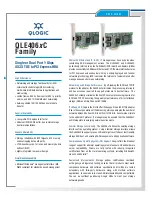
3
5 Technical Specifications
Item
Data
Standard
IEEE 802.11b (up to 11 Mbps)
IEEE 802.11g (up to 54 Mbps and the turbo mode of
108Mbps (For USA))
Supported Operating
Systems
Windows XP
Windows 2000
Windows ME
Windows 98SE
Data Rates
IEEE 802.11b: 1, 2, 5.5, 11 Mbps
IEEE 802.11g: 6, 9, 12, 18, 24, 36, 48, 54 Mbps
Modulation Technology
IEEE 802.11b:
DQPSK, DBPSK, DSSS, CCK
IEEE 802.11g:
BPSK, QPSK, 16 QAM, 64 QAM, OFDM
Wireless Frequency Range
IEEE 802.11b: 2400 ~ 2497 MHz ISM band
IEEE 802.11g: 2400 ~ 2483.5 MHz ISM band
Media Access Control
CSMA/CA with ACK
Network Constructions
Ad-Hoc Mode (Peer-to-Peer without Access Point)
Infrastructure Mode (Communications to wired
networks via Access Points with Roaming)
Supported Channels
11 channels for United States
13 channels for Europe Countries
13 channels for Japan
13 channels for China
Receiver Sensitivity
IEEE 802.11b:
Typical –84dBm for 11Mbps
Typical –90dBm for 2Mbps
IEEE 802.11g:
–87dBm at 6Mbps
–86dBm at 9Mbps
–85dBm at 12Mbps
–83dBm at 18Mbps
–80dBm at 24Mbps
–76dBm at 36Mbps
–71dBm at 48Mbps
–66dBm at 54Mbps


































